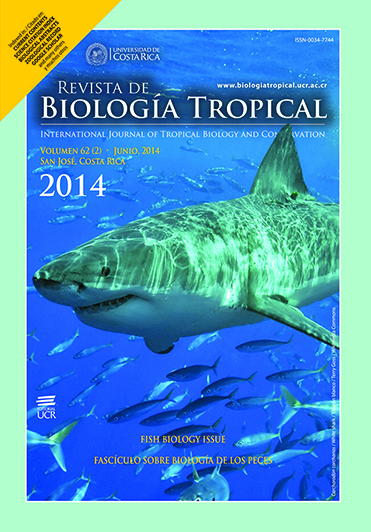Abstract
Jaguars (Panthera onca) are the largest predator in lowland forests of Amazonia but there have been few studies on their occurrence and activity in such forests. Here, we used camera traps to document the occurrence and activity of jaguars within a local area (~650ha) of lowland forest of Eastern Ecuador, over two sample periods (2005-2008, 7 222 trap days; 2010-2012, 6 199 trap days). We accumulated 151 independent photos of jaguars (189 total photographs) that represented 21 different individuals, including 11 males (114 photographs), seven females (32 photographs), and three that could not be assigned to a sex. Individual jaguars varied in the number of months they were recorded in the area; ten were photographed in only one month; five were photographed over periods of 8 to 22 months; and five from 45 to 81 months. Capture rates across all camera stations averaged 10.6/1 000 trap days; capture rates did not differ between the two sample periods. Male jaguars were more active during the day (06:00am-18:00pm; 71% of photographs), whereas females were equally active during the day and night. Monthly activity was variable but showed no consistent pattern. Although the study area is much smaller than typical home ranges of jaguars, the area is clearly visited by a large number of different individuals, some of whom repeatedly visit the area, indicating that it forms part of their home range. Other individuals likely were simply passing through the area. Based on the number of jaguars recorded during this study, it is clear that the region is an important area for conservation. Continued protection will be needed to ensure that populations of jaguars and other species remain viable.##plugins.facebook.comentarios##

This work is licensed under a Creative Commons Attribution 4.0 International License.
Copyright (c) 2014 Revista de Biología Tropical
Downloads
Download data is not yet available.


